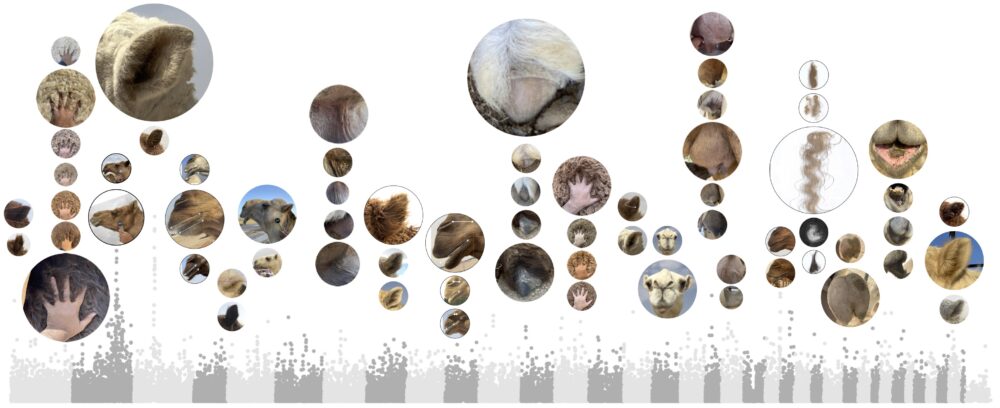* No self-evaluation
* No peer-evaluation
* Absence
* No presentation
Participants:
Mohammad Alzuwayed-MZ (classic micro – current plant).****/
Ahmad Groof-AG (classic animal – current micro).**/
Mohamed Abdellatif-ML (classic plant – current animal).*/
Kawthar Akbar-KA (classic micro – current plant).*/
Zahraa Almomen-ZM (classic animal – current micro).*/
Anfal Mahdi-AM (classic plant – current animal).*/
Suggested biotechnology papers (Thanks to Dr. Nasmah Bastaki):
Microbial papers:
- Lawyer F.C., Stoffel S., Saiki R.K., Chang S.Y., Landre P.A., Abramson R.D. & Gelfand D.H. (1993) High-level expression, purification, and enzymatic characterization of full-length Thermus aquaticus DNA polymerase and a truncated form deficient in 5′ to 3′ exonuclease activity. Genome Research 2, 275-87.
Plant papers:
- Guo M., Ye J., Gao D., Xu N. & Yang J. (2019) Agrobacterium-mediated horizontal gene transfer: Mechanism, biotechnological application, potential risk and forestalling strategy. Biotechnology Advances 37, 259-70. (Review)
- Indurker S., Misra H.S. & Eapen S. (2007) Genetic transformation of chickpea (Cicer arietinum L.) with insecticidal crystal protein gene using particle gun bombardment. Plant Cell Reports 26, 755-63.
- Clough S.J. & Bent A.F. (1998) Floral dip: a simplified method for Agrobacterium -mediated transformation of Arabidopsis thaliana. The Plant Journal 16, 735-43.
- Beyer P., Al-Babili S., Ye X., Lucca P., Schaub P., Welsch R. & Potrykus I. (2002) Golden Rice: Introducing the β-Carotene Biosynthesis Pathway into Rice Endosperm by Genetic Engineering to Defeat Vitamin A Deficiency. The Journal of Nutrition 132, 506S-10S.
- Paine J.A., Shipton C.A., Chaggar S., Howells R.M., Kennedy M.J., Vernon G., Wright S.Y., Hinchliffe E., Adams J.L., Silverstone A.L. & Drake R. (2005) Improving the nutritional value of Golden Rice through increased pro-vitamin A content. Nature Biotechnology 23, 482-7.
- Puchta H. (2003) Marker-free transgenic plants. Plant Cell, Tissue and Organ Culture 74, 123-34. (Review)
- Ozyigit I.I. & Yucebilgili Kurtoglu K. (2020) Particle bombardment technology and its applications in plants. Molecular Biology Reports 47, 9831-47. (Review)
- Tacket C.O. (2005) Plant-derived vaccines against diarrheal diseases. Vaccine 23, 1866-9. (Review)
- Kusaba M. (2004) RNA interference in crop plants. Current Opinion in Biotechnology 15, 139-43. (Review)
- Arshad W., Haq I.-u., Waheed M.T., Mysore K.S. & Mirza B. (2014) Agrobacterium-Mediated Transformation of Tomato with rolB Gene Results in Enhancement of Fruit Quality and Foliar Resistance against Fungal Pathogens. PLOS ONE 9, e96979.
Animal papers:
- Baldassarre H., Hockley D.K., Olaniyan B., Brochu E., Zhao X., Mustafa A. & Bordignon V. (2008) Milk composition studies in transgenic goats expressing recombinant human butyrylcholinesterase in the mammary gland. Transgenic Research 17, 863-72.
- Cheng G., Fu C., Wang H., Adoligbe C., Wei S., Li S., Jiang B., Wang H. & Zan L. (2015) Production of transgenic beef cattle rich in n-3 PUFAs by somatic cell nuclear transfer. Biotechnology Letters 37, 1565-71.
- Lee S.H., Gupta M.K., Ho Y.T., Kim T. & Lee H.T. (2013) Transgenic chickens expressing human urokinase-type plasminogen activator. Poultry Science 92, 2396-403.
- Snyder B.R. & Chan A.W.S. (2018) Progress in developing transgenic monkey model for Huntington’s disease. Journal of Neural Transmission 125, 401-17.
- Hu S., Ni W., Sai W., Zi H., Qiao J., Wang P., Sheng J. & Chen C. (2013) Knockdown of Myostatin Expression by RNAi Enhances Muscle Growth in Transgenic Sheep. PLOS ONE 8, e58521.
- Wen H., Lan X., Zhang Y., Zhao T., Wang Y., Kajiura Z. & Nakagaki M. (2010) Transgenic silkworms (Bombyx mori) produce recombinant spider dragline silk in cocoons. Molecular Biology Reports 37, 1815-21.
- Pawar N., Gireesh-Babu P., Sabnis S., Rasal K., Murthy R., Zaidi S.G.S., Sivasubbu S. & Chaudhari A. (2016) Development of a fluorescent transgenic zebrafish biosensor for sensing aquatic heavy metal pollution. Transgenic Research 25, 617-27.
Your presentation should include:
- Title, student name, course, presentation date-slide.
- Paper front page and abstract-slide.
- General info about the organism-slide(s).
- General info about the problem/goal of the study-slide(s).
- General description about the methods used-silde(s).
- Result (each figure or table in a separate slide).
- Discussion slide about the usefulness of the study.
- A final slide about your ideas/suggestions/ethical issues for implementing such studies in Kuwait.
To Do:
- Search for a classical biotechnology research paper and send a pdf to your instructor for approval.
- Make a powerpoint file named (YourName_501).
- Send a copy of your presentation a day before your actual presentation.
- Non-presenters should read the paper and prepare to engage in discussion.
- We will repeat the process with more recent publications.
